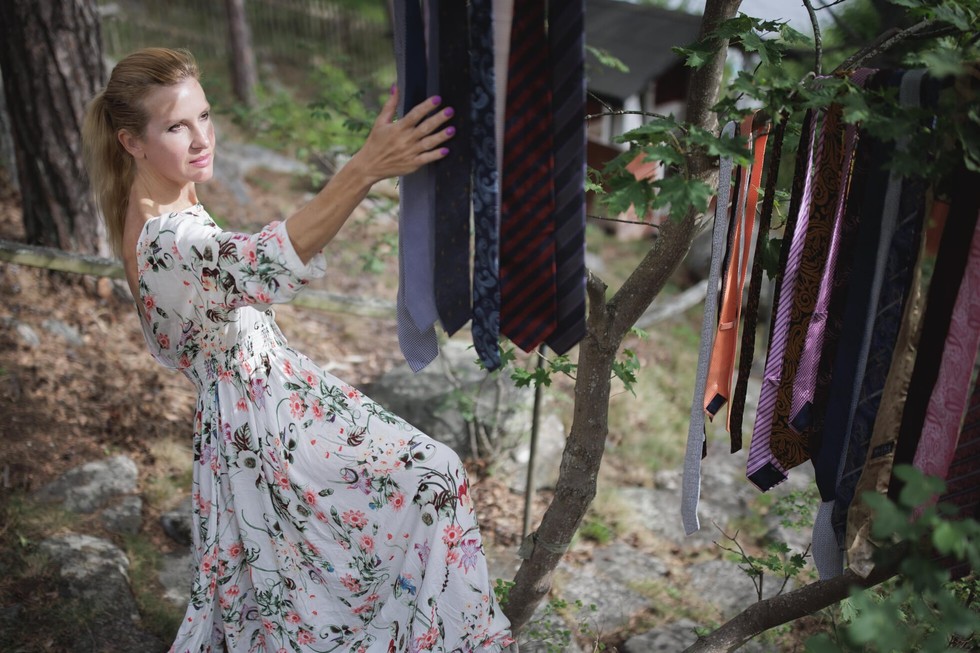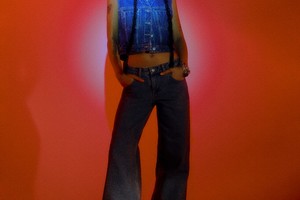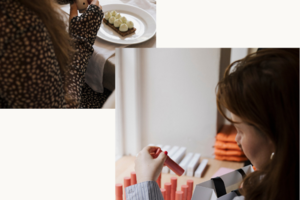Reclamation, Reconstruction, and Roses: Exploring Ludmila Christeseva’s Project of Feminist Empowerment
Written by Ruby RoseWith her project Ties of Married Men, Roses of Unbound Women: Feminist Reclamation and the Reconstruction of Power, Ludmila Christeseva invites the audience into a space of collective female empowerment. Through the medium of craft, she has built a community of women reclaiming their histories and transforming them into symbols of strength. Ludmila reflects on the inspiration behind the project, its remarkable growth and the liberating power of community.
Ruby Rose: Tell me about your project Ties of Married Men, Roses of Unbound Women: Feminist Reclamation and the Reconstruction of Power. What sparked the initial idea?
Ludmila Christeseva: This project was born out of conversations with men who reacted to my collection of ties with jealousy: “Are these all your lovers?” Transforming ties into roses became a way to confront those projections and recast the material as emblems of female desire. The tie, long a marker of male authority, turned into a metaphor for fleeting encounters where women’s voices are rarely heard. By collecting and reshaping them, I claimed these symbols of masculinity and remade them into trophies of female agency. What began as a provocation has since grown into a collective practice, asking: what shifts when women not only hold but actively transform the symbols of patriarchy into their own?
RR: Elements of craft have often featured in your previous projects. What inspired you to use these techniques to explore themes of female reclamation and empowerment?
LC: Craft has never been a true source of economic independence for women. Traditionally, it functioned as a dowry - a way to shape and sustain a home, carry forward family values, and preserve memory. I find this both meaningful and problematic in feminist contexts. With this project, I want to preserve these intimate practices while reframing them as a powerful manifestation of visibility, empowerment, and sisterhood. By reworking forgotten ties through craft, I invite women to transform personal and collective histories into symbols of strength.
RR: Did the physical process of making these roses deepen your emotional connection to
the project?
LC: Yes, absolutely. I enjoy the process deeply, and when other women join me, it becomes even more meaningful. Working together strengthens my connection to the project and allows me to learn from their stories, perspectives, and ways of making. The shared act ofcrafting turns a personal ritual into a collective experience of exchange, empowerment, and discovery.
RR: Why did you choose the tie as your material for this project? Did your relationship to it evolve throughout the process?
LC: I chose the tie because it embodies both a forgotten trace of fleeting encounters and a entry point into new ones, infused with the presence and scent of those who wore it. The soft silks that once adorned men are reshaped into roses that adorn women, shifting power intofemale hands. This act is not merely a transformation of one object into another, but a dialogue between two gendered forms: the tie and the brooch. Masculine-coded power is softened through the delicacy of craft, while feminine-coded ornament is politicized. Over time, my relationship to the material evolved from provocation to reflection - the tie became not just a relic of the encounter, but a medium for reimagining power, memory, and desire.
RR: Roses are often seen as powerful symbols. What significance does the rose hold for you personally, and how did you incorporate that meaning into your work?
LC: The rose unfolds as a metaphor for the female body, particularly the vulva, its layered petals evoking intimacy, sensuality, and fertility. Soft yet defended by thorns, it mirrors the resilience of womanhood - delicate, yet enduring. Where the tie constricted, the brooch blossomed, revealing affect, identity, and relational meaning. Like petals unfurling, it resists control while binding stories, memories, and shared experiences into a delicate yet unbreakable network of connection.
RR: Did you anticipate that the Roses of Ties project would grow beyond its original form? How did it develop into an expanding community?
LC: I could not have imagined that something so simple - a small gesture, a modest transformation - could resonate so deeply. The project has developed organically through
the participation and stories of the women involved. What began as a symbolic gesture with ties and brooches has grown into a space where people can share personal experiences, express identity, and explore emotions.
RR: What does it mean to you for these pieces to bring private rituals into the public sphere and to do so through the energy and support of female collaboration?
LC: For me, the project reveals the hidden dynamics of gender and social roles. Ties of Married Men and Roses of Unbound Women explore the delicate balance between duty, care, and personal freedom. By bringing these private rituals into the public sphere, I open a space where constraint and intimacy, order and desire, can be witnessed, reflected upon, and questioned. The energy and support of female collaboration magnify this effect - through sharing stories, experiences, and creative expression, women transform private gestures into collective narratives of resilience, resistance, and connection.
RR: What kind of experience do you hope for the viewers to have with this project? What impact do you hope it leaves with them?
LC: This project traces the invisible choreography between duty, care, and the yearning for freedom. I invite the audience to condemn, reflect, adore, or be stirred in any way that this shared constellation of resilience, rebellion, and connection may provoke. In the act of making, I learn from other women - and perhaps, in turn, they learn from me - woven together in a delicate, unfolding exchange of insight, strength, and shared experience.
RR: Looking ahead, what do you imagine as the future of this project? Are there ways you would still like to see it evolve?
LC: As an artist, it is profoundly moving to witness my seed grow and blossom. Roses of Ties highlights the unpaid, gendered labor of craft as an act of care, remembrance, and resilience. The women involved create to heal, connect, and resist. Looking ahead, I hope the project continues to expand, blossoming with more roses, gestures, and connections, evolving into a living, dynamic practice that invites collaboration and nurtures an ongoing dialogue between intimacy, resilience, and collective expression.














